Bird’s Eye View: A town wiped from existence
A thin layer of snow covers piles of rocks in the desolate Centralia landscape. Photo by Meliha Anthony.
January 29, 2021
At one time, there was nothing particularly special about the small, bustling town of Centralia, Pa, except perhaps the rich coal deposits lying beneath the ground, or the people who lived there and loved their home. Now, it would be possible to drive through the area and just see the forest lining the crumbling roads, never suspecting that houses, schools, and stores once stood there. Now, it is a ghost town, erased from existence in the span of mere decades.
As we drove across northeastern Pennsylvania toward Centralia, I noticed the towns we passed through, each of them sitting in quiet decay. This is the Pennsylvania coal region. At its height, coal promised economic prosperity, bringing jobs to thousands of workers, but this hope crumbled right along with the coal industry. My own great-grandfather worked in the mines. He was one of the many men who died because of their profession; he died at the age of 53 from a disease known as “Black Lung.” Ultimately, coal was not what everyone had hoped it would be: mining was a perilous job that cost many workers their lives, and, in the aftermath of a declining coal industry, the environment and economy were equally decimated.
Centralia is the epitome of a town destroyed by coal, albeit differently than other mining towns. The problems began in 1962 during a trash-burning at the landfill, when an exposed seam in the ground allowed fire to spread into the old coal mines. Throughout the 1970s and 80s, the sheer danger of the fire below became increasingly evident with a few developments: a gas-station’s underground tanks were measured at 172 degrees — a dangerously high temperature. About two years later, a young boy nearly died after a sinkhole opened up in the ground beneath him. Carbon monoxide levels in the town were rising, putting all of its residents in danger. Ultimately, the government evacuated the town, paying residents to leave.
(story continues below)
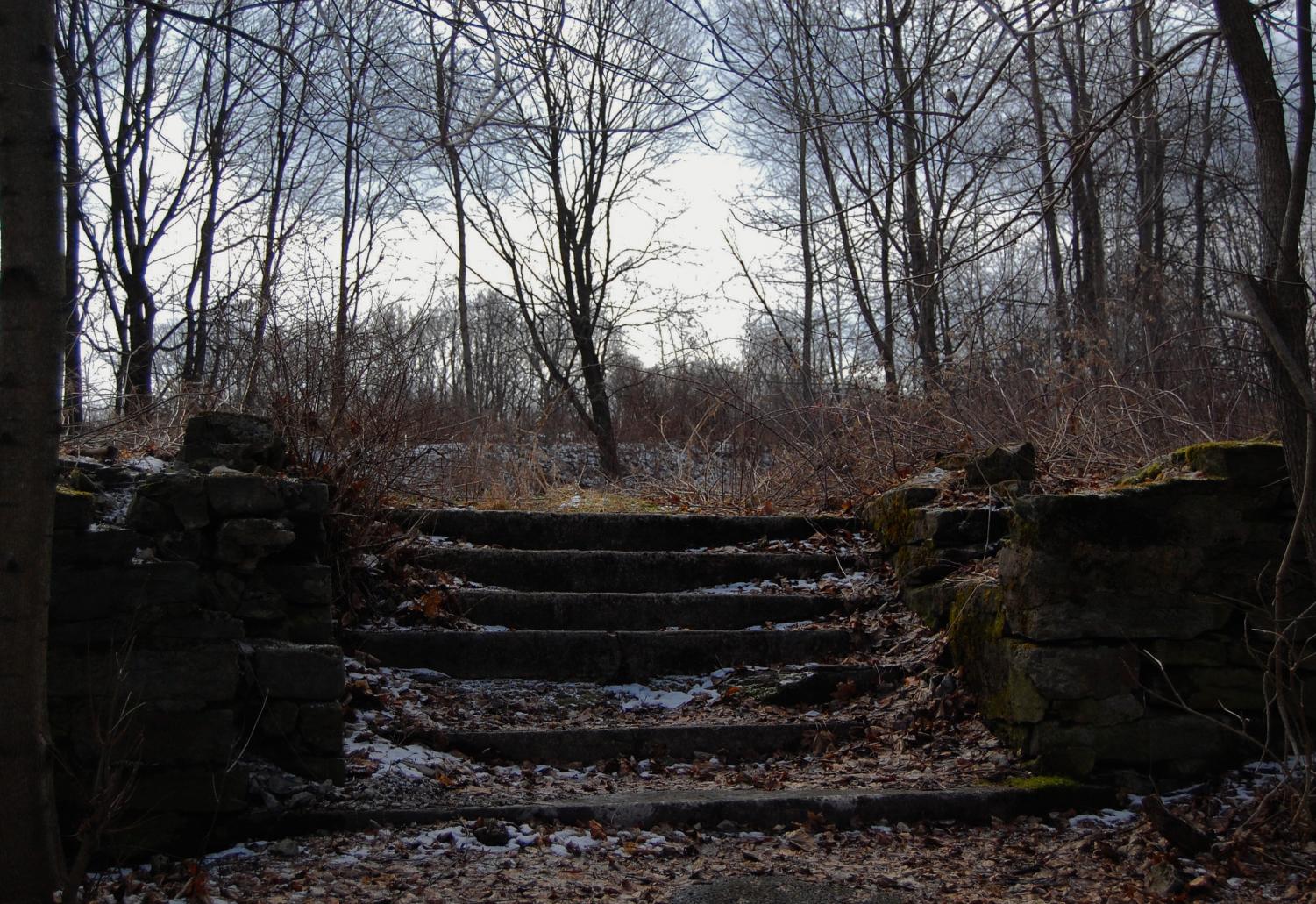


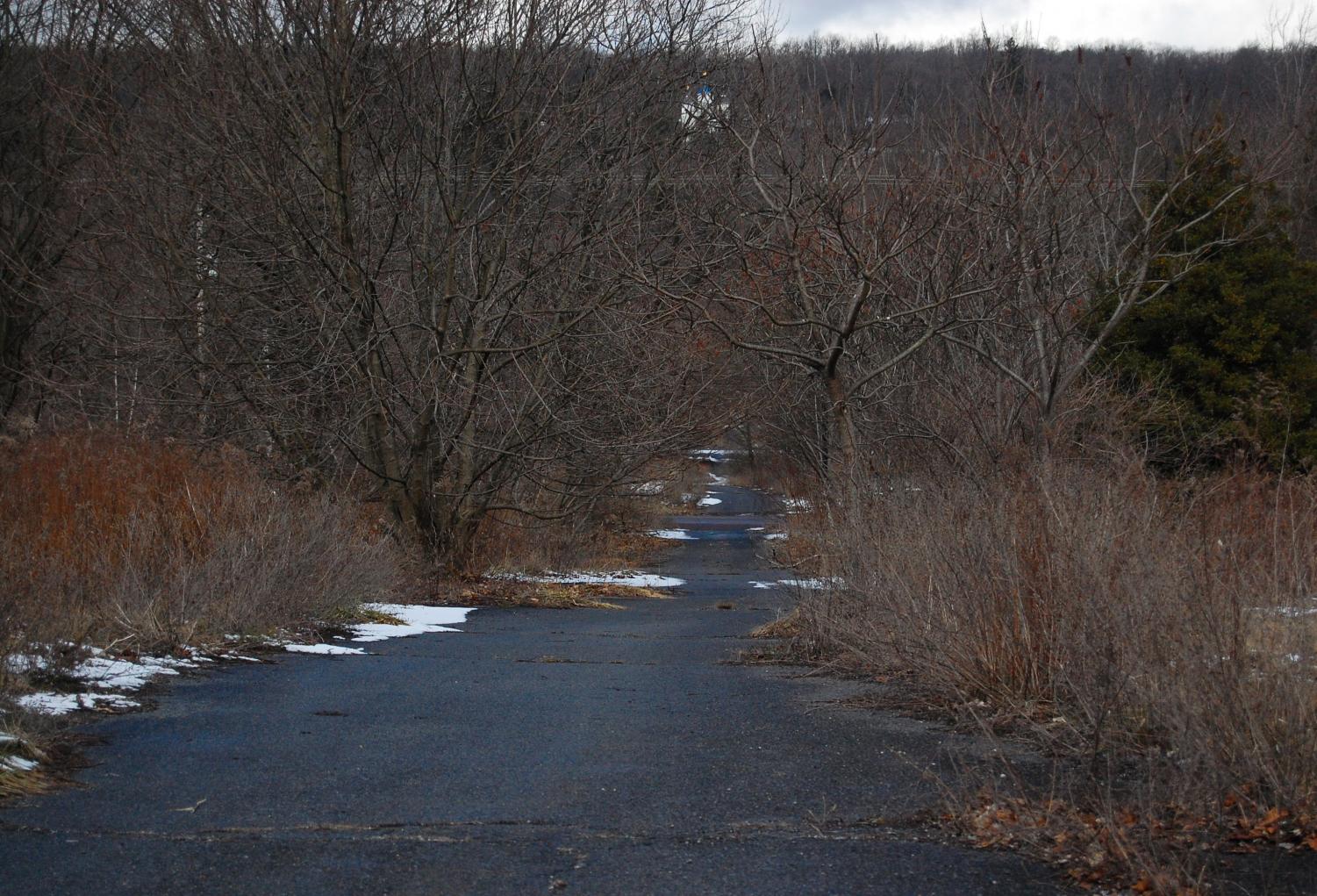
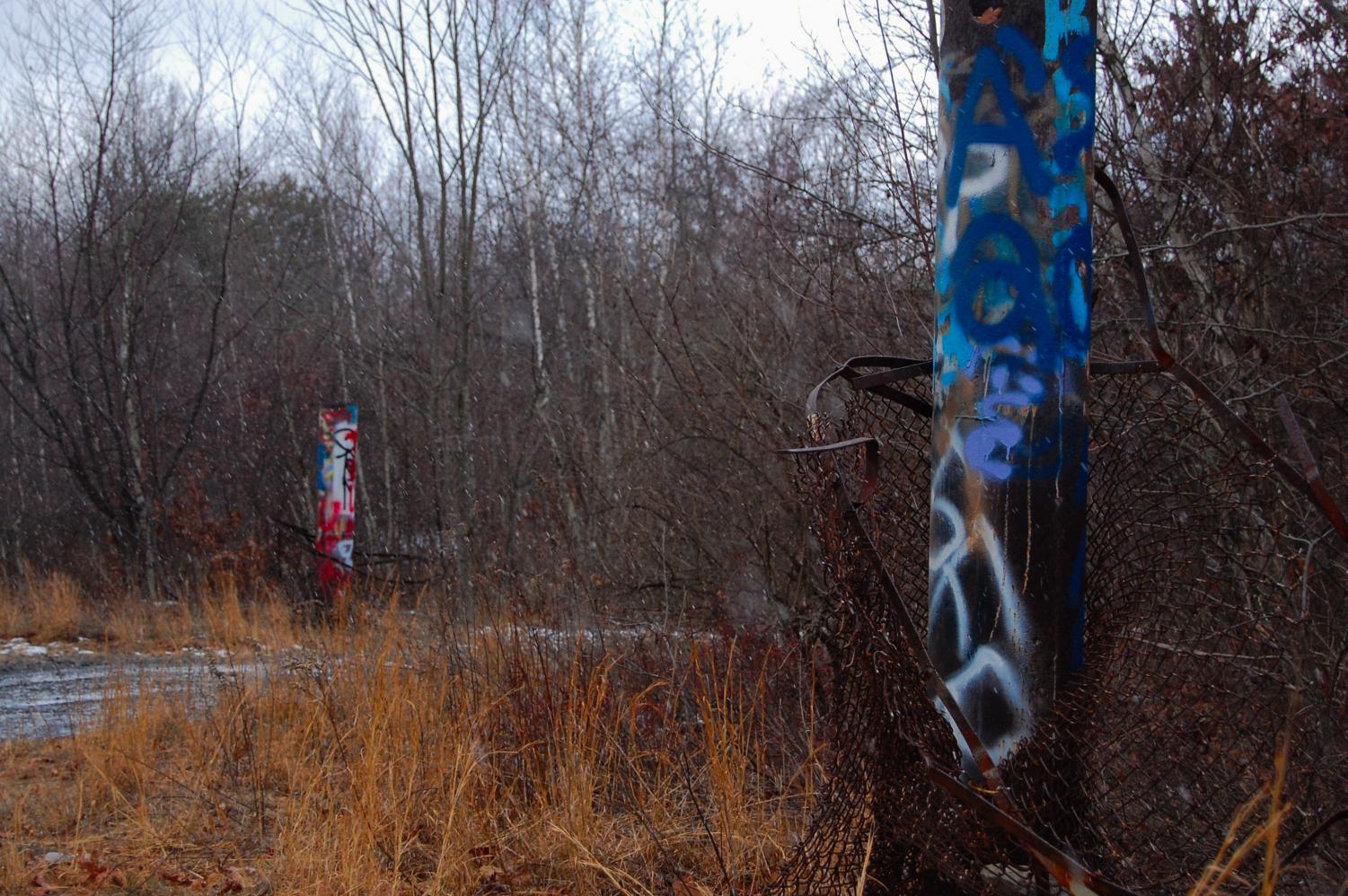
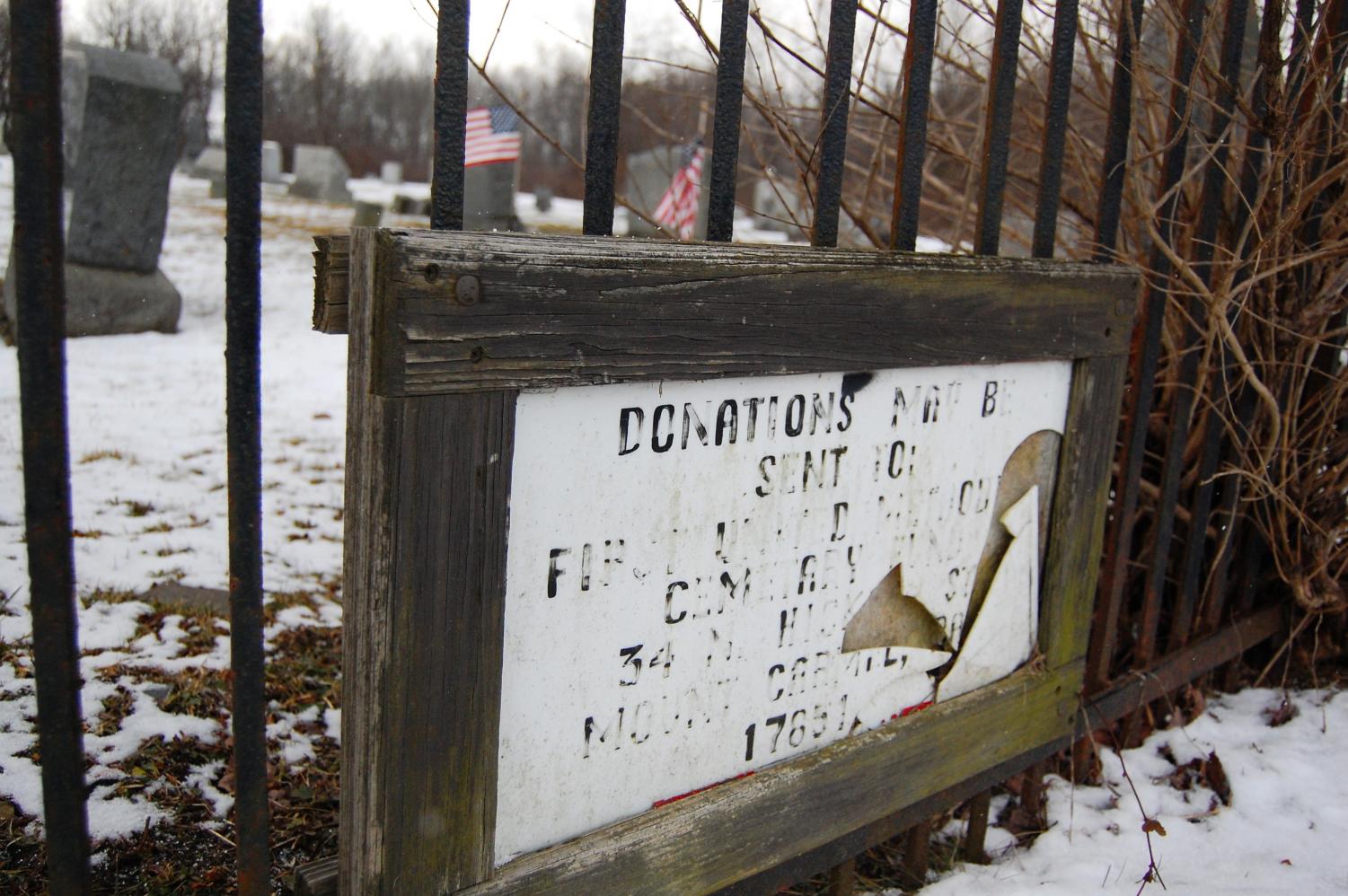
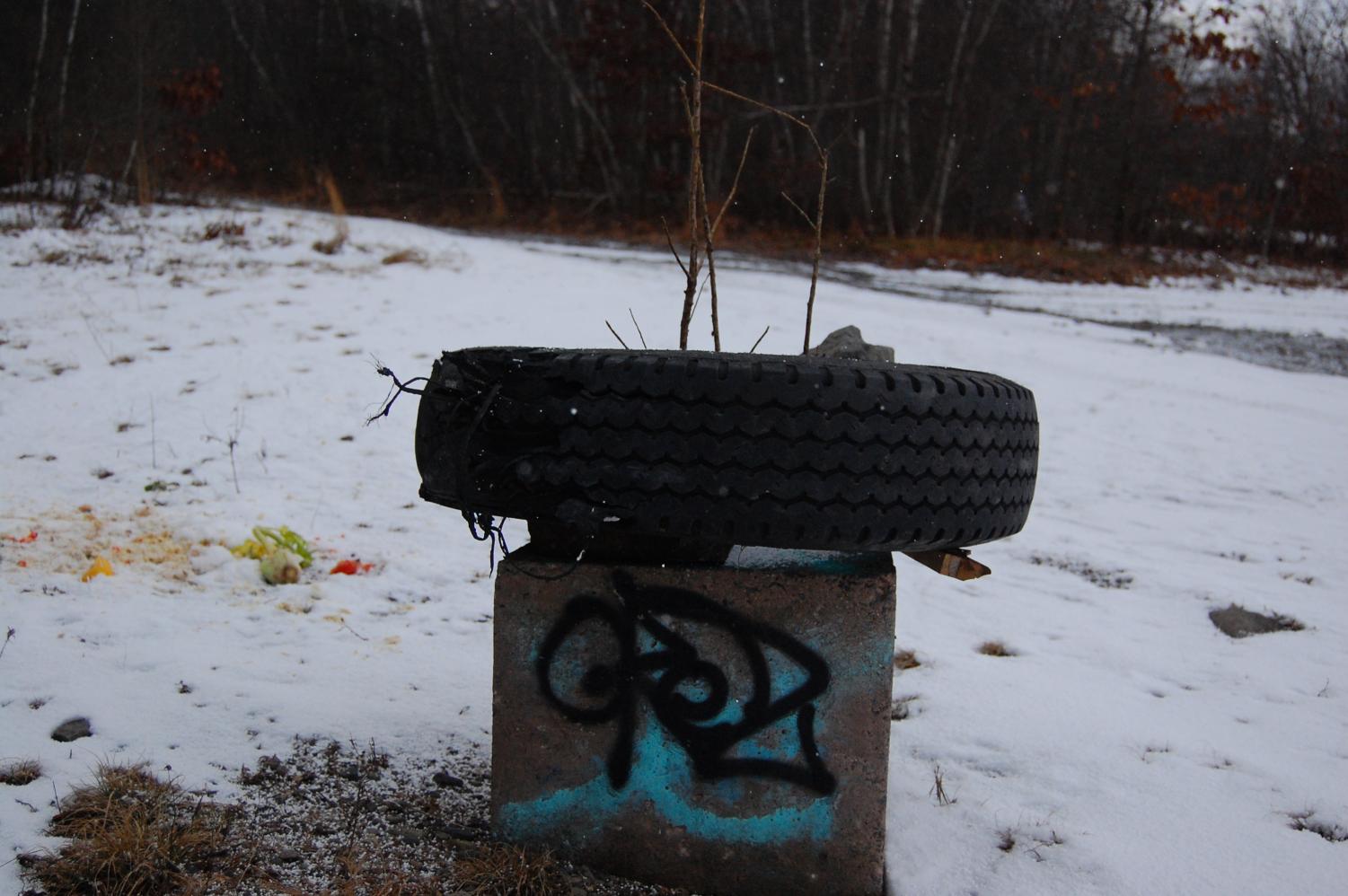



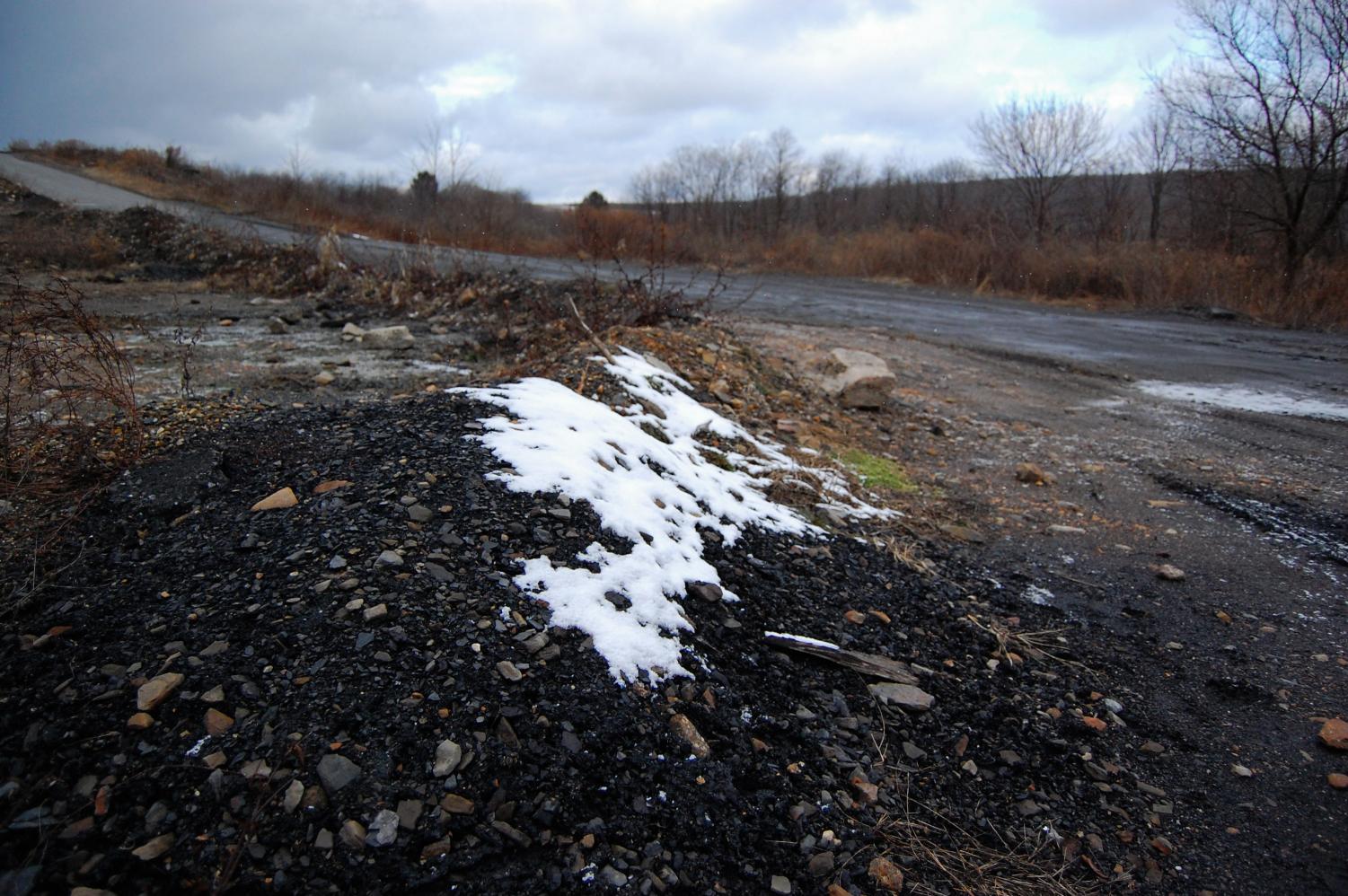
Walking around Centralia now is eerie, disorienting, and post-apocalyptic. The stormy sky creates an ominous, fitting background to the former-town. A faintly sulfurous odor tinges the air. Many of the roads are crumbling and overgrown, leading to dead-ends where the land has begun to heal and the forest has taken over. Ventilation pipes stand alone in seemingly random spots near the cemetery, their rusting metal covered in colorful graffiti. A church lies atop a hill overlooking the town, one of the last remaining buildings other than the houses of the five residents who refuse to leave despite the danger. Fragments and traces remain of the society that once resided there, with strange, graffiti-covered concrete objects that litter the desolate land and surrounding forest.
Despite having seen the results of it with my own eyes, I find it nearly impossible to fathom how a town can be wiped from existence in such a short period of time. The story of Centralia is a true tragedy, evidenced by the masses of people who were forced to uproot their lives and leave their homes, not to mention the immeasurable environmental damage that the fire has caused and the greenhouse gases that it pours into the atmosphere. If history has anything to show, it’s that human actions and carelessness have consequences — and most often, it’s the environment that has to pay the price. Yet, visiting Centralia gave me a spark of hope for the future. On the surface of the town, nature has already begun to reclaim the land. And if that can happen in Centralia, Pa, a town that seems otherwise destroyed, then maybe there’s hope for the rest of our planet to slowly recover from our societal destruction as well.


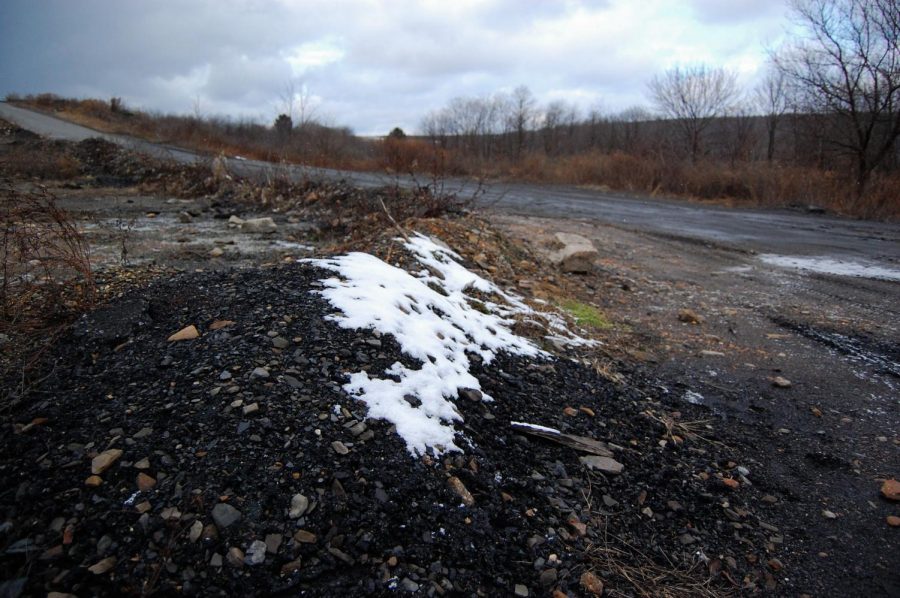

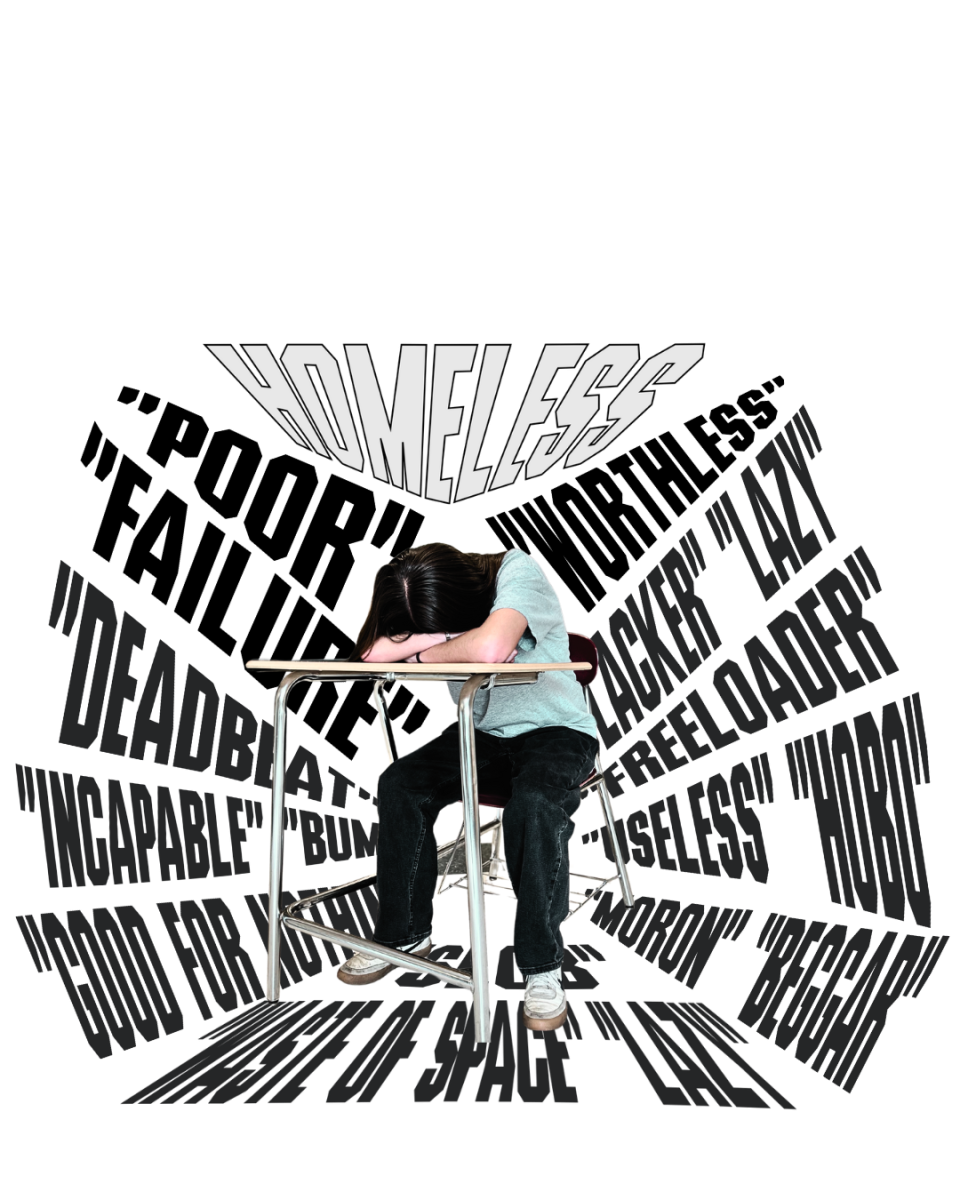







Kate Burak • Jan 31, 2021 at 7:09 pm
Great article!
Joshua Landis • Jan 30, 2021 at 4:42 pm
Lovely. Bravo.